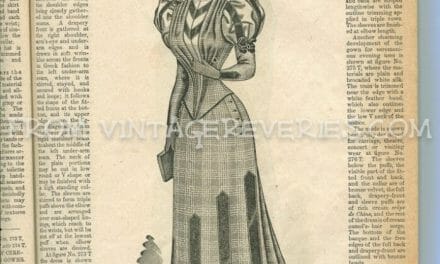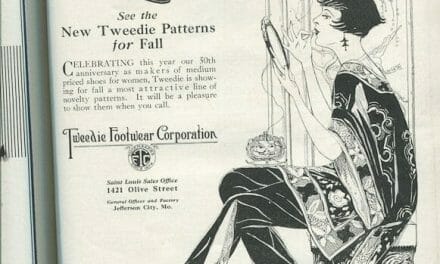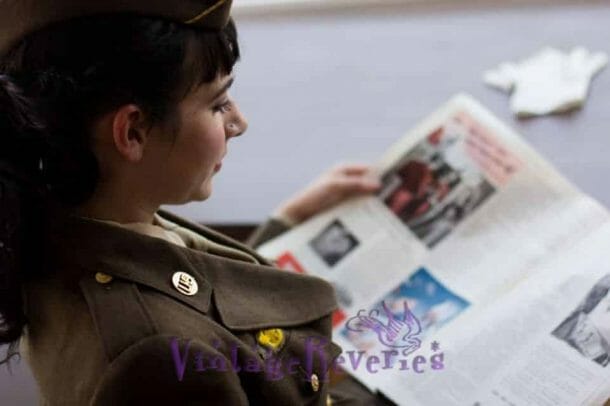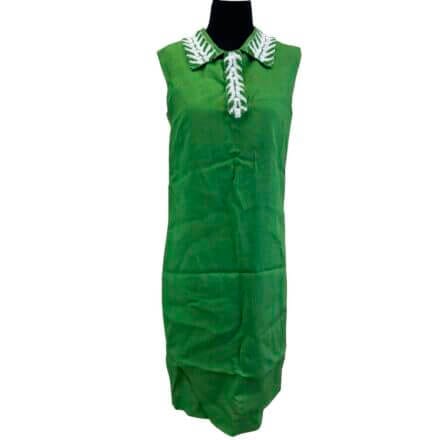
Edwardian Fashion Photos from 1913 and an Ivory Soap Advertisement

Isn’t this Ivory Soap advertisement from 1913 a classic piece of vintage charm? The tagline reads, “Yes, it will wash, if you use Ivory Soap and a little care… Ivory Soap 99.44% pure.” This nostalgic ad is a reminder of how deeply intertwined marketing and daily life were in the early 20th century. Ivory Soap, a trusted brand of the time, presented a sense of purity and reliability, values that resonated with homemakers during the Edwardian period—an era obsessed with cleanliness and feminine propriety. At its core, this ad hints at the lifestyle ideals cherished in 1913, when domestic perfection was an aspiration for many women.
The advertisement appeared in The Modern Priscilla, a popular women’s magazine that catered to homemakers, providing them with sewing patterns, recipes, needlework guides, and advice on keeping up with current trends. Many households relied on these magazines not just for entertainment but also as a guide to proper living. At a time when the world was rapidly modernizing, these periodicals helped bridge the gap between traditional expectations and emerging modernity.
Following this quaint soap advertisement, the magazine featured stunning photographs that highlighted fashionable embroidered frocks ideal for the 1913 summer season. These dresses, adorned with intricate eyelet details and French embroidery, exemplify the Edwardian era’s focus on elegance and craftsmanship. Elaborate, yet airy, these summer frocks were designed with both practicality and high fashion in mind—perfect for warm weather while maintaining refinement.
The Edwardian Era: A Fashionable Transition
The Edwardian period (named after England’s King Edward VII, who reigned from 1901–1910) extended into the years leading up to World War I. This was a time of significant social and cultural transformations, marked by both opulence and innovation. Fashion, notably, began to embrace lighter and more comfortable designs when compared to the rigid, voluminous structures of the Victorian years. By 1913, women’s clothing had shifted toward simpler silhouettes—softly draped fabrics paired with exquisite detailing like embroidery and lace.
Summer frocks from this era were often made with fabrics like cotton lawn, voile, or muslin, which were breathable and ideal for warmer months. Eyelet designs and embroidery were especially popular, as seen in the patterns described in this magazine. These intricate details showcased the artistry of the time while also demonstrating the rising influence of French couture on everyday fashion across the Atlantic. As one tip from the magazine notes, “We all know that large eyelets are more neatly made if carefully run twice before cutting,” a suggestion that reveals the level of dedication and precision homemakers invested in their wardrobe pieces.
Edwardian women’s fashion not only emphasized grace and femininity but also reflected societal ideals of refinement. The S-bend corset, which sculpted a striking hourglass silhouette by thrusting the bust forward and hips back, was fading out of popularity by 1913. In its place came more natural, high-waisted silhouettes. These embroidered frocks would often feature belts or sashes to gently define the waist without the crushing constriction of older corsets.
Ivory Soap: An American Household Staple
Besides discussing elegant frocks, we can’t overlook the cultural significance of the Ivory Soap ad itself. This product, introduced by Procter & Gamble in 1879, was revolutionary in its claim to contain 99.44% pure ingredients. Advertisements like this one built upon Ivory’s reputation for being trustworthy and pure—qualities highly valued in the Edwardian home where cleanliness and sanitation were becoming central to domestic life.
Ivory Soap played a key role in the growing awareness of germ theory, which had gained prominence toward the end of the 19th century. Before this, many people did not fully understand the importance of hygiene. Soap was marketed not only as a cleaning agent but also as an essential household weapon against disease. The ad’s promise of purity served as reassurance to homemakers striving to maintain their household as a sanctuary of good health.
Much like the intricately embroidered frocks of 1913, Ivory Soap symbolized simplicity and quality—the very ideals cherished during the Edwardian age. The soap’s iconic branding was so influential that its purity tagline remains one of the most enduring slogans in advertising history.
Small Touches of Nostalgia
The delicate balance of domesticity, style, and propriety comes alive in these pages of The Modern Priscilla. As I pored over the scans, I couldn’t help but marvel at the handiwork and care reflected in both the advertisement and the fashion spreads. These images are more than just glimpses of pretty dresses or clever marketing—they are windows into a way of life where attention to detail was paramount, from the wisp of a lace hemline to the choice of soap for cleaning those cherished garments.
If you love Edwardian fashion as much as I do, you’ll appreciate the effort and craftsmanship that went into these designs. There’s something so romantic about the elaborate gowns, with their thoughtful details like French embroidery, ruffles, and eyelet work. Imagine the patience it took to sew one of these pieces—not to mention laundering it afterward with products like Ivory Soap, which promised gentle yet effective results for delicate fabrics.
So here’s to this wonderful mix of Edwardian nostalgia and practicality: from the graceful lines of summer frocks to the steadfast promises of a century-old soap. Both served as symbols of an era that prized elegance, purity, and a commitment to living well.
Take a closer look at the scans for yourself—you’re bound to fall in love with the charm of 1913, just as I have.





















You must be logged in to post a comment.